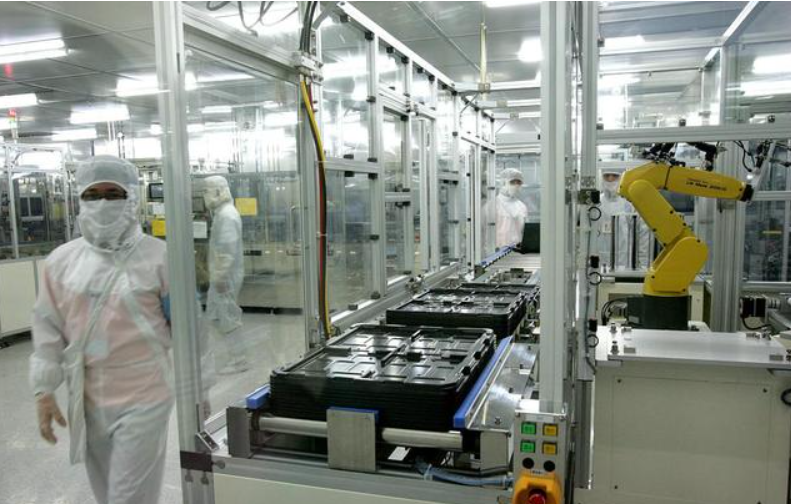| Production process flow of energy storage battery system |
| Release time:2023-01-04 09:58:05| Viewed:98 |
Production process flow of energy storage battery system
The production process flow of the energy storage battery system is divided into two sections: battery module production and system assembly.
In the battery module production section: the qualified battery cells are assembled into battery modules through the processes of lug cutting, cell insertion, lug shaping, laser welding, module packaging, etc;
Battery module production line
In the system assembly section: the qualified battery modules and BMS circuit boards are assembled into the finished system products, and then the finished product packaging process is started after the primary testing, high temperature aging and secondary testing. See the following figure for details:
Production process of battery module
According to the instructions of relevant companies, the production process flow chart of the module is as follows:
(1) Cell stacking: this process is the first process for preparing modules. The qualified finished electric core is paired with the side plate, end plate, cover plate, connecting piece and other components, and then the electric core is stacked according to a certain series parallel sequence.
Cell Stack 3D Layout
Attention shall be paid to avoid glue overflow during stacking. During stacking, the two sides of the module need to align the electric core, and the two sides need to have an alignment mechanism, with the side plane tolerance ≤ 0.5mm. The place where the stacking tooling contacts the electric core shall not cause damage to the electric core.
The datum plane for stacking the electric core can be selected according to Party B's technical level and the tolerance range of the electric core size (at present, the tolerance of the electric core height drawing is 0.5mm), Busbar (hard), but it is necessary to ensure that the horizontal tolerance of the pole cylinder surface is ≤ 0.3mm, and at the same time, there is no welding defect caused by the Z-direction height difference.
In the process of module stacking, the components and electric cores are provided with a positioning mechanism and stacked in the middle. Each component stacked needs to be reshaped and compressed (length and width) once to prevent short circuit of the electric core in the whole process. Do not damage the appearance of battery and components, or damage the blue film of battery insulation.
Before and after stacking, it should be able to judge that the polarity of the electric core conforms to the series parallel rule of the module. It shall be able to give an alarm in case of abnormal judgment.
(2) Welding of electric core lug of sub module: this process is the second process of module preparation. The stacked submodules are respectively welded on the return current drain with the positive and negative lugs by laser technology according to the technical requirements; Different process parameters are required for the welding of positive lug and bus bar, and negative lug and reflow bar respectively.
Lug welding machine (3) Submodule into shell: this process is the third process of module preparation. The sub module is automatically put into the shell by the robot to form a module.
(4) Lug connection between submodules: this process is the fourth process of module preparation. The positive electrode lug and negative electrode lug are welded on the reflux bar respectively by laser technology according to the technical requirements, and the electrode lug is connected in series between sub modules.
(5) Sampling line connection: this process is the fifth process of module preparation. The sampling terminal of the sample plate is welded on the reflux bar according to the technical requirements through the laser technology.
(6) Module assembly: this process is the sixth process of module preparation. The end plate and side plate are automatically assembled to the module through the robot, and the welding is completed according to the technical requirements through the laser technology.
(7) Module test: conduct performance inspection on the finished product modules, and then pack the qualified finished product modules for warehousing.
The module production process mainly includes the sub module production process and the process of assembling the sub module into a module, without by-product output. |








